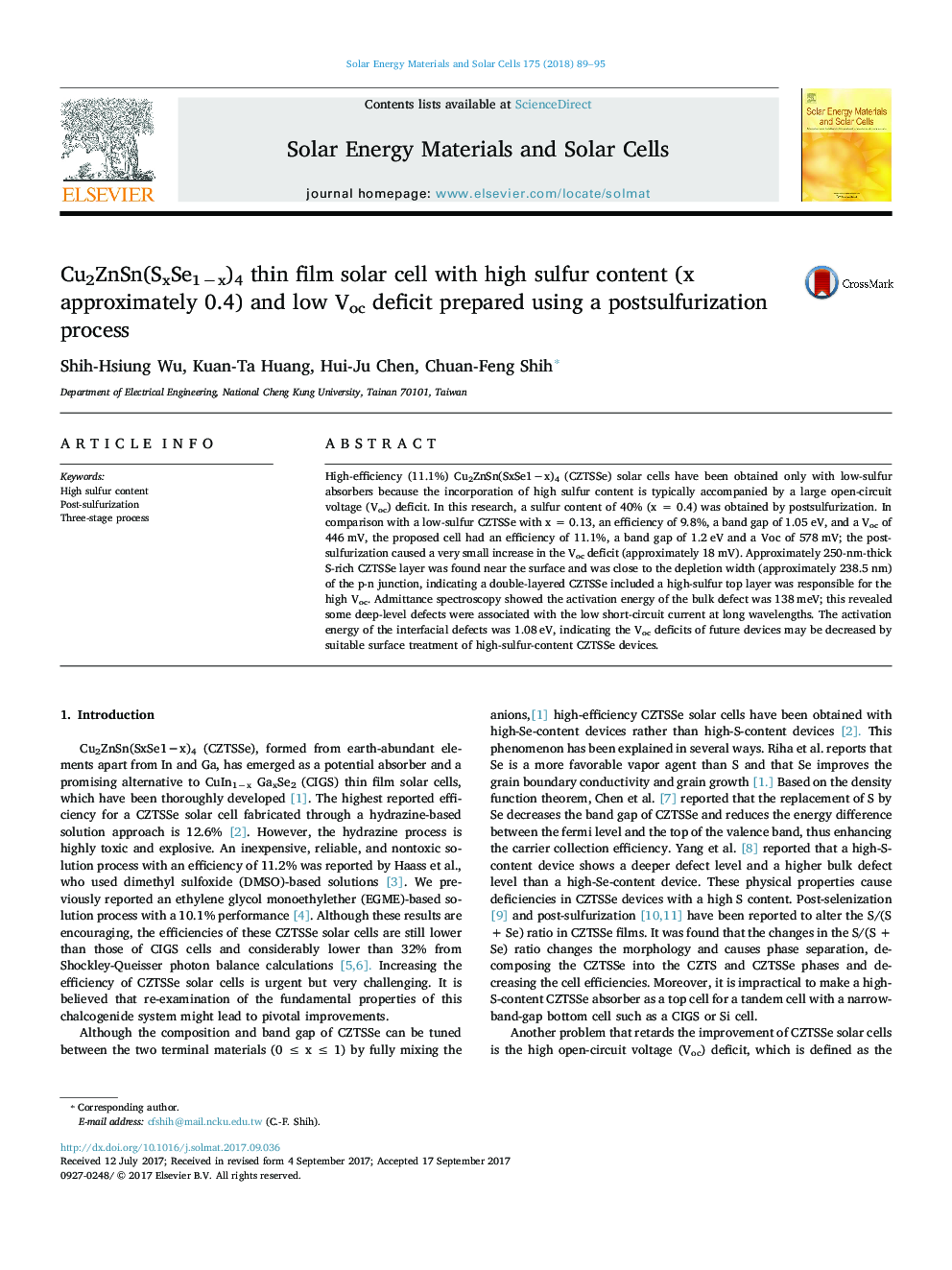| Article ID | Journal | Published Year | Pages | File Type |
|---|---|---|---|---|
| 6534505 | Solar Energy Materials and Solar Cells | 2018 | 7 Pages |
Abstract
High-efficiency (11.1%) Cu2ZnSn(SxSe1âx)4 (CZTSSe) solar cells have been obtained only with low-sulfur absorbers because the incorporation of high sulfur content is typically accompanied by a large open-circuit voltage (Voc) deficit. In this research, a sulfur content of 40% (x = 0.4) was obtained by postsulfurization. In comparison with a low-sulfur CZTSSe with x = 0.13, an efficiency of 9.8%, a band gap of 1.05Â eV, and a Voc of 446Â mV, the proposed cell had an efficiency of 11.1%, a band gap of 1.2Â eV and a Voc of 578Â mV; the post-sulfurization caused a very small increase in the Voc deficit (approximately 18Â mV). Approximately 250-nm-thick S-rich CZTSSe layer was found near the surface and was close to the depletion width (approximately 238.5Â nm) of the p-n junction, indicating a double-layered CZTSSe included a high-sulfur top layer was responsible for the high Voc. Admittance spectroscopy showed the activation energy of the bulk defect was 138Â meV; this revealed some deep-level defects were associated with the low short-circuit current at long wavelengths. The activation energy of the interfacial defects was 1.08Â eV, indicating the Voc deficits of future devices may be decreased by suitable surface treatment of high-sulfur-content CZTSSe devices.
Related Topics
Physical Sciences and Engineering
Chemical Engineering
Catalysis
Authors
Shih-Hsiung Wu, Kuan-Ta Huang, Hui-Ju Chen, Chuan-Feng Shih,
